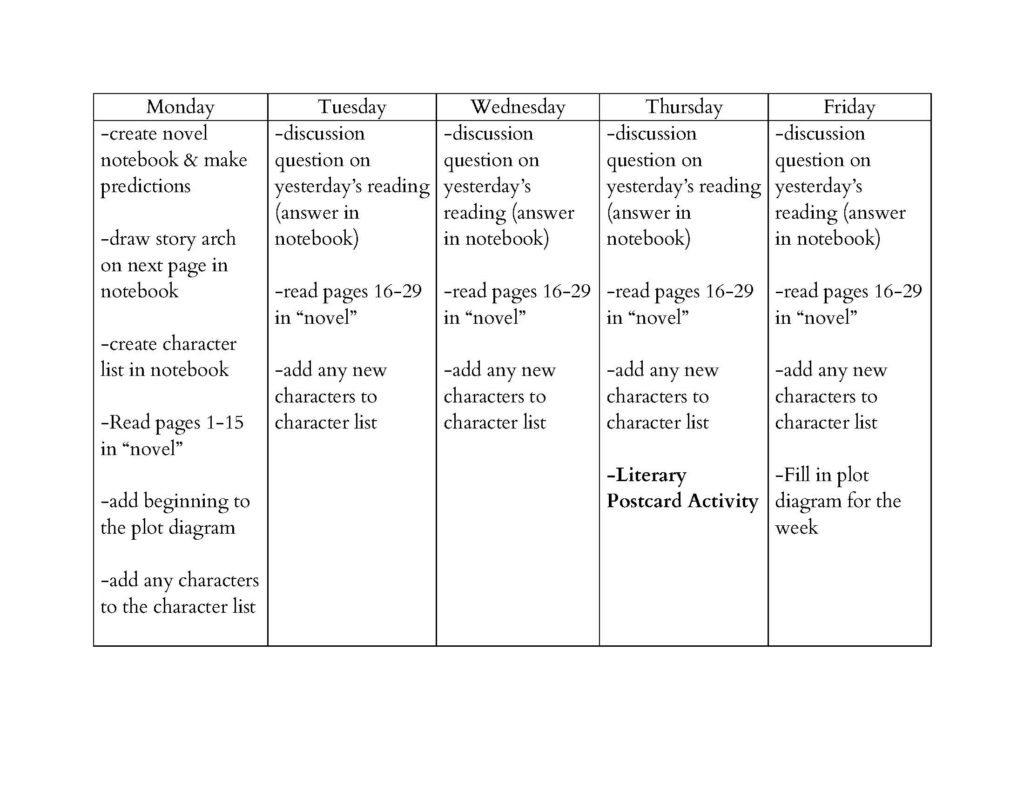
Hello all! I hope this little note finds you all happy and healthy, snuggled up at home, and if not quite that, at least healthy and determined to make it through these difficult days together.
First off, here is the link to the dropbox that contains all of these resources and documents.
As I sat down to share some middle school language arts resources, I realized just how much stuff I have and how confusing it can be for an audience that isn’t exclusively filled with teachers. Because of that I am going to try to give just some basic information and some more simple guidance on what I would do to implement a language arts curriculum at home. The great thing about language arts is that most of this information can be used for a variety of ages, I would say 5th grade through 12th grade. The only things that would need to be changed is the reading materials and expectations regarding the quality of the responses and work.
My number one recommendation for teaching Language Arts at home would be to do a novel study. Meaning, choose a novel that is reading level appropriate and spend a number of weeks, maybe 4 or 5, reading through the novel and completing activities that revolve around it. This is such a natural way to stay organized and focused, it is time consuming in the best way, and you can hit a bunch of different skills and standards in one fail swoop.
In order to set this up, these are some steps to follow:
- Choose a novel. The great thing about only having one kid to teach is that they can be involved in this. It can fit their interests and your own. I would stick with one that is about 200 pages, give or take. I will include a list of possible options linked here if you need a starting point. For my 8th graders, I taught “The Secret Life of Bees” which we all loved so that could be an option too.
- Get a notebook for the student or have them make one by stapling lined paper together. This will be their hub of all of the activities they do throughout the novel.
- Break the novel up into daily readings that fill anywhere from 20-25 days worth.
Once this is in place, next up is planning the daily routine and lessons for the novel study. I would structure those days as follows:
- Day 1: Have the student write the title of the novel in their notebook and make some predictions about the novel and the story just from looking at the book and flipping through. What is the main character going to be like? When is the story going to take place? Is it going to be suspenseful or sweet? Etc. Then have the student draw a plot diagram on the next page in their notebook, as well as a character list. Both of these things can be found in the dropbox. Then read together or silently the first day’s reading.
- Day 2 – last day of reading: As you work your way through the novel, each day before reading, have the student answer a discussion question about the previous day’s reading. They will answer it in their notebook. Some sample discussion questions can be found in the dropbox. Quickly discuss this question with the student before continuing on to the day’s reading. Once or twice per week you can then have them complete an activity after their reading that relates to the novel and strengthens their understanding of the concepts they are supposed to be learning. I have a ton of novel study activities that I will put in the dropbox. They are all pretty self-explanatory, creative and fun.
- Finally, at the end of the novel, I would have them write an essay. How long this will take and how much support your student needs is completely dependent on their own abilities and age so that will vary greatly. Some novels lend themselves well to an argumentative essay while others are more naturally inclined to an informative essay. Either way would work. I will include some essay writing instructions in the dropbox as well, but the easiest way, especially for middle school, is to work through a fill in the blank outline with them and then have them put it all together in paragraph form.
This is what a sample week of lessons would look like:

*Note: I wouldn’t really worry about tests or quizzes. The real purpose of assessments is so that teachers can really evaluate whether students are learning the concepts and actually absorbing things like the plot and the themes of the book. With only one or two students, this will be pretty apparent already to you and unnecessary for everyone.
Hopefully this is useful and helpful for some of you out there! Once again, all of this can be adapted for different age groups. Even elementary kids can do this, just with more guided reading and easier discussion questions. If you have any questions or need more resources, don’t hesitate to ask! MEB
+ ADD A COMMENT